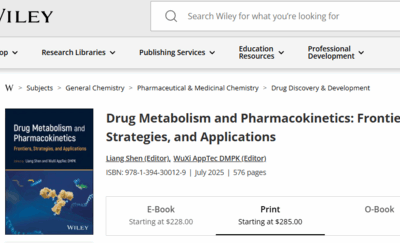There are many factors involved in designing a preclinical drug safety assessment program, but among the priorities is having a good understanding of the different requirements from the various regulatory agencies in which the Investigative New Drug (IND) will be submitted.
For the project manager or project team leader, overcoming those challenges can be overwhelming. A full understanding of the regulatory guidelines that need to be adhered to during the testing process is vital to designing an efficient plan. Regulatory assessment is just one component of the complex planning process, which must take into account all of the needed resources, the available and dedicated infrastructure, and the overall process and required management of the activities. Throughout the process, the project manager must continually assess the relevance of the data and overall program, while maintaining focus on safety assessment.
During the planning stage, an experienced laboratory will make all the necessary inquiries about the study plan and help guide the team to include all needed elements. Without that assistance and guidance, the project could become more costly if studies must be repeated due to not meeting all the country’s specific compliance regulations.
But there are multiple government organizations overseeing the work being done in those labs, including the U.S. Food & Drug Administration (FDA), the United States Department of Agriculture (USDA), and the National Institute of Health (NIH). Those organizations represent just a few of the governing bodies across the globe that set the standards for facility design, minimum operational standards, regulatory compliance, and best practices for appropriate study or project conduct.
“My colleagues and I review the contents of a proposed Investigational New Drug (IND) registration package to understand the goals, objectives and ultimate registration pathways,” said Dr. Mark Walker, Senior Technical Director of WuXi AppTec. “The question should always be asked of the client, ‘Are you going for regulatory submissions and registration for the U.S. FDA as well as additional countries?’ We have found that given the potential increase in the value of their asset, the drug, this opens the conversation to fully understand their program and strategy. It gives them time to consider the pros and cons of each approach. Our job as their service provider is to fully understand the strategy for their overall program, both from a safety assessment standpoint and a regulatory submission perspective.”
Historically, many of the key components of drug safety assessment programs occur at contract research laboratories. The team operates under the overarching framework of Good Laboratory Practices (GLP) bringing substantial experience in conducting studies in regulatory toxicology. For those laboratory technicians, the process is familiar and routine.
Regardless of whether the study is conducted on the bench, or using an in vivo model, those government organizations maintain responsibility for ensuring compliance for current practices as well as historical work that falls within their jurisdiction. These regulatory agencies work with each facility’s Quality Assurance Unit to monitor compliance. In the end, however, the Study Director and Testing Facility Management are ultimately responsible for the work being conducted.
“A lot of these small companies treat their prospective drug or therapeutic as an asset,” explained Dr. Walker. “They are going to develop it, get it to the IND, hopefully, gain approval, and potentially sell it or partner with an established company. In general, drugs with penetration into other countries have a greater market value. The subject population isn’t only based on therapeutic indications, but also on the overall number of potential patients to treat and improve their way of life. As drug developers, our mission is to find and develop therapies for every disease, and focus on safety at all times.”
When considering the differences in expectations for the various global regulatory authorities, there are areas of compatibility. The International Council for Harmonisation of Technical Requirements for Pharmaceuticals for Human Use (ICH) is an initiative that brings together regulatory authorities and the pharmaceutical industry to discuss the scientific and technical aspects of pharmaceutical product development and registration.
Nonetheless, there are elements to study designs – including GLP compliance of the program elements – that may differ between agencies. For instance, the National Medical Products Administration (NMPA) is the Chinese agency responsible for the regulation of drugs and medical devices in China. To meet their minimum standards for general toxicology studies, they may require specific testing that is more complex and requires additional assessment. While these differences may require little adjustment for the conducting laboratory, the design of the preclinical safety assessment program intended for registration in China requires a strict awareness of those variables.
In the big picture, choosing a service provider to develop a safety assessment program for IND registration, while considering the regulatory submissions strategy, is a critical decision for both small and large companies, but especially virtual or startup clients.
Talk to an expert today about your drug development program and make sure you are completing the studies needed to meet your goals.
As a global company with operations across Asia, Europe, and North America, WuXi AppTec provides a broad portfolio of R&D and manufacturing services that enable the global pharmaceutical and life sciences industry to advance discoveries and deliver groundbreaking treatments to patients. Through its unique business models, WuXi AppTec’s integrated, end-to-end services include chemistry drug CRDMO (Contract Research, Development and Manufacturing Organization), biology discovery, preclinical testing and clinical research services, helping customers improve the productivity of advancing healthcare products through cost-effective and efficient solutions. WuXi AppTec received an AA ESG rating from MSCI for the fourth consecutive year in 2024 and its open-access platform is enabling around 6,000 customers from over 30 countries to improve the health of those in need – and to realize the vision that “every drug can be made and every disease can be treated.”


